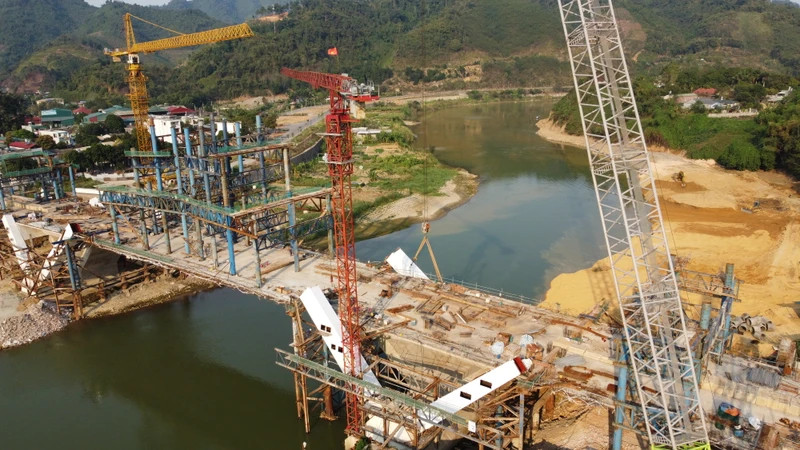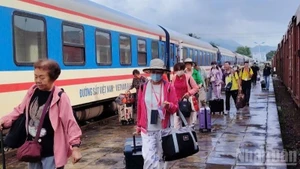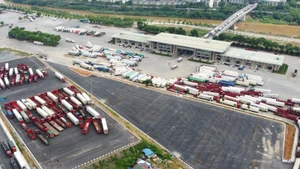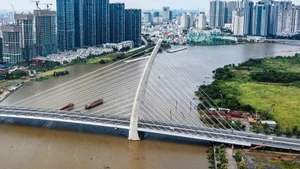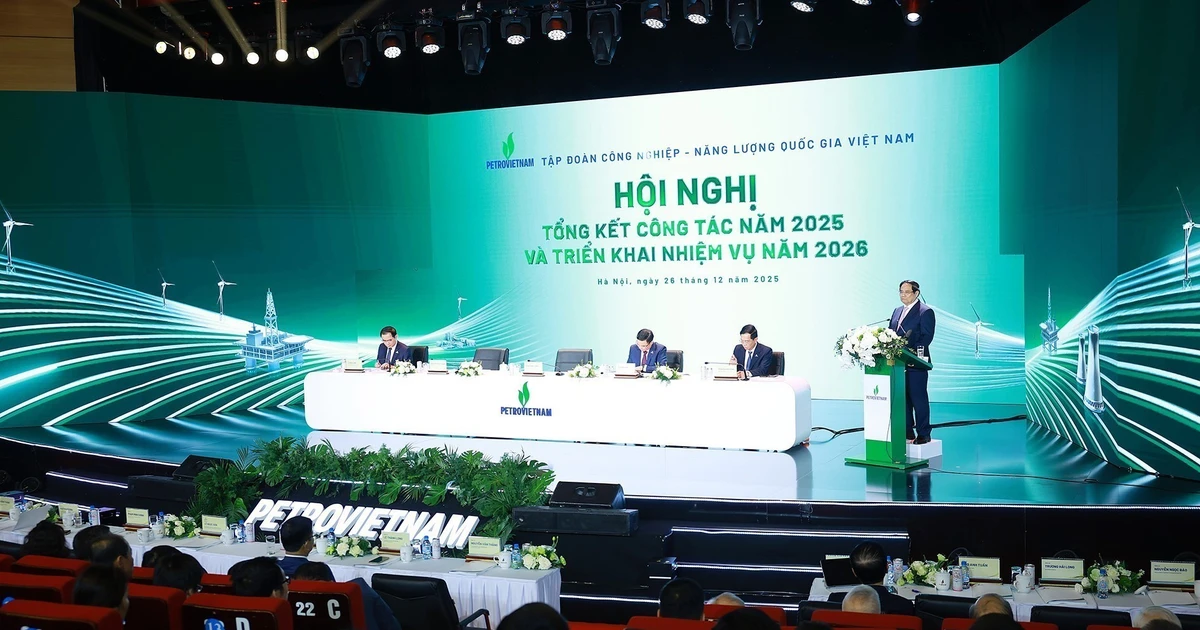It is expected to help Lao Cai develop rapidly and create the premise for developing infrastructure to ensure security and national defence, while opening a promising economic corridor connecting Lao Cai with other provinces and cities in the country and the region.
Assessing the importance of transportation infrastructure in the construction and socio-economic development of the locality, Nguyen Trong Hai, Vice Chairman of the People's Committee of Lao Cai Province, said traffic in the province includes all types of roads, railways, waterways, and airways in the future.
In recent times, the transportation industry has made an important contribution to implementing the province's socio-economic development policies. Developing transport infrastructure in a synchronous and modern direction, establishing a complete network and connecting the country with the world, has contributed to building Lao Cai into a growth pole and a centre connecting economic trade between Vietnam and ASEAN countries and the Southwest region of China.
The backbone of the Noi Bai-Lao Cai Expressway
According to Nguyen Quoc Huy, Director of Lao Cai Department of Transport, the primary highlight of Lao Cai's transportation system is the Noi Bai-Lao Cai Expressway. Since being put into operation in 2014, the route has created momentum and contributed to changing the socio-economic appearance, serving as a lever for GDP growth among Northwestern provinces. It is the backbone for Lao Cai to build roads connecting with industrial and commercial parks and tourist centres of localities in the province.
A typical example is the road project connecting Noi Bai-Lao Cai Highway to Sa Pa Town to serve the travel needs of people and the development requirements of Sa Pa National Tourist Area with the highlight being Mong Sen Bridge — the viaduct with the highest pillars in Vietnam, completed in September 2023 — which has shortened travel time between Lao Cai City and Sa Pa Town. Pho Lu Interchange project connects provincial road No.152 with Noi Bai-Lao Cai Highway, thus connecting the eastern and western districts of Lao Cai with Sin Man District of Ha Giang Province via Noi Bai-Lao Cai Highway.
Regarding border traffic infrastructure connection, Lao Cai is also focusing on implementing two important projects: the road bridge across Red River in the Bat Xat (Vietnam) - Ba Sai (China) border area and the Bat Xat (Vietnam) - Ba Sai (China) border area.; and railway connection between Lao Cai Station (Vietnam) and North Hekou Station (China).
The railway connection between Lao Cai Station (Vietnam) and North Hekou Station (China) is expected to contribute towards quickly increasing the circulation time of import and export goods and reducing rail transport costs. The project has important significance for the socio-economic development of the two provinces of Lao Cai (Vietnam) - Yunnan (China), serving as a bridge for economic trade and trade exchange between Vietnam and Vietnam in general and creating a premise to expand and improve the transport capacity of the Hai Phong-Hanoi-Lao Cai-Kunming railway.
Another outstanding highlight is the Sa Pa Airport project, whose investment policy was approved by the Prime Minister on October 21, 2021, with the scale of phase one being a level 4C airport and a level II military airport, reaching a capacity of 1.5 million passengers/year. The second phase will have a capacity of three million passengers/year. The construction site is in Cam Con Commune, Bao Yen District, with total investment in phase one at about 4,183 billion VND. Currently, this project has basically completed the site clearance work for phase one and Lao Cai Province is actively calling for investment.
Joining hands to solve difficulties
Lao Cai is a highland border province with strongly divided terrain and geology, steep hills, deep abysses, and complicated weather, and is often severely affected by natural disasters such as hail, floods, landslides, etc. As such, investing in the construction of transportation infrastructure requires huge resources, while the province's socio-economic conditions are still low compared to the general level of the country. People's lives in highland areas are still difficult, and resources for transport infrastructure development are limited. Attracting investment from socialised capital is not easy.
According to Nguyen Trong Hai, Vice Chairman of the People's Committee of Lao Cai Province, in an effort to overcome difficulties and promote the advantages of traffic connection, Lao Cai Province has identified specific groups of solutions, such as actively working with ministries and central branches to accelerate the implementation of key transport infrastructure projects to create momentum for the province's socio-economic development, including: Noi Bai-Lao Cai Expressway’sYen Bai-Lao Cai section with a scale of four lanes; the double gauge railway connecting Lao Cai Station (Vietnam) with North Hekou Station (China); completing the detailed planning of the Lao Cai-Hanoi-Hai Phong standard gauge railway; a border bridge in Ban Vuoc Commune, and so on.
The province will continue to call on the Government to support attracting and calling for investment in the Sa Pa Airport project. The province will focus on mobilising all resources to complete the project on developing and improving the quality of key urban areas and transportation in Lao Cai Province in the 2020-2025 period.
Lao Cai will also urge localities to strengthen leadership and direction to accelerate the implementation of road upgrading projects to the centres of communes, villages,and hamlets with potential for developing tourism, high-tech agriculture, and traditional craft villages and commodity products. It will also invest in upgrading rural roads according to the national target programme on new style rural areas.
Sectors and localities in the province will focus on coordinating to remove obstacles in site clearance for each specific project to contribute to accelerating project implementation progress, while increasing investment attraction in the province in general.
